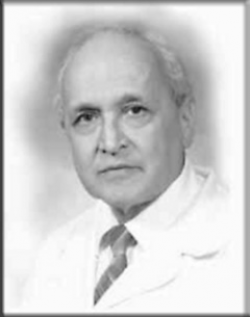Professor Franz Halberg

- Born
- 5 July 1919
- Died
- 9 June 2013 (age 93)
Professor Franz Halberg is considered to be the father of chronobiology, the study of biological rhythms. He coined the term ‘circadian’, and his distinguished research career focussed on the clinical significance of built-in biological rhythms.
Halberg was born in Romania in 1919. He studied clinical endocrinology at Harvard Medical School where he held a WHO fellowship in 1948. In 1949, Halberg moved to the University of Minnesota, and it was here that he made his ground-breaking discoveries that gave birth to the field of chronobiology.
In 1951, he published a paper describing the daily changes in human blood eosinophil levels in health and disease. His continuing studies in this area led to major findings about how cells’ biological processes follow daily cycles, which are governed by endogenous mechanisms. Halberg revealed how 24-hour periodicity is influenced by environmental factors, chiefly lighting and feeding schedules which entrain the cycle. These endogenous diurnal cycles came to be known as circadian rhythms, and the external stimuli that entrain the cycles as ‘Zeitgeber’, or time-giver.
Circadian rhythms underpin all of biology, from butterfly migration, sleep regulation and flowering in plants. Halberg continued to look at circadian rhythms from a clinical perspective in human medicine, investigating their role in conditions such as pregnancy, schizophrenia and endocrine disorders. He contributed to cancer chronotherapy by showing that optimizing treatment with marker cycles increased efficiency and reduced side-effects. In related work, he advocated individualized circadian timed treatment for cardiovascular disorders, which can halve the risk of adverse side-effects such as stroke.
As well as chronobiology, Halberg also pioneered chronobioethics. He tried to discover how to use the time-structured part of the mind, or chronousphere, to promote positive emotions and tolerance.
Halberg published over 3,500 works, received multiple awards and was nominated on multiple occasions for a Nobel Prize. The Halberg Chronobiology Laboratory in Minnesota continues his work.



